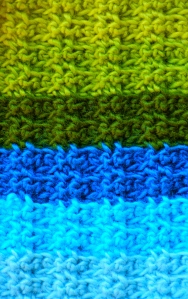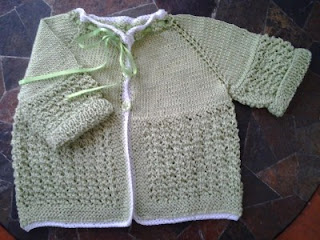I have been working on a scarf that I really like to make! I have made several of them. The pattern just appeals to me!
I
found this pattern on Vickie Howell's blog. Although she is using her
Sheepish yarn, I am using Red Heart Super Saver in the colors of Black,
Brown and White.
Makes for a very nice stylish scarf!
Materials
3 Balls (or up to 21!) Stitch.Rock.Love Sheep(ish) for Caron (30%Wool/70% Acrylic; 167 yds/154m) in assorted colors.
Size US 8 (5mm) Needles (knit version)
3 Balls (or up to 21!) Stitch.Rock.Love Sheep(ish) for Caron (30%Wool/70% Acrylic; 167 yds/154m) in assorted colors.
Size US 8 (5mm) Needles (knit version)
Size I (5.5mm) Hook (crochet version)
Tapestry Needle
Finished Measurements 5" x 61"
Gauge 25 sts = 4" (10cm) in mistake rib
Note: If you’re duplicating my version exactly, you’ll use all 21 colors of Sheep(ish). The color pattern will be repeated twice, as a mirror image of itself as follows.
First half of scarf:
White(ish)
Grey(ish)
Gun Metal(ish)
Black(ish)
Plum(ish)
Magenta(ish)
Red(ish)
Hot Pink(ish)
Pink(ish)
Taupe(ish)
Camel(ish)
Espresso(ish)
Pumpkin(ish)
Coral(ish)
Yellow(ish)
Lime(ish)
Chartreuse(ish)
Olive(ish)
Teal(ish)
Turquoise(ish)
Tapestry Needle
Finished Measurements 5" x 61"
Gauge 25 sts = 4" (10cm) in mistake rib
Directions
CO 31 sts.
Row 1: *K2, p2; rep from *, ending with a k2, p1.
Row 2: Repeat Row 1 (These 2 rows make Mistake Rib Pattern)
Rows 3-252: Repeat last two rows, changing colors after every 6th row.
Row 1: *K2, p2; rep from *, ending with a k2, p1.
Row 2: Repeat Row 1 (These 2 rows make Mistake Rib Pattern)
Rows 3-252: Repeat last two rows, changing colors after every 6th row.
Note: If you’re duplicating my version exactly, you’ll use all 21 colors of Sheep(ish). The color pattern will be repeated twice, as a mirror image of itself as follows.
First half of scarf:
White(ish)
Grey(ish)
Gun Metal(ish)
Black(ish)
Plum(ish)
Magenta(ish)
Red(ish)
Hot Pink(ish)
Pink(ish)
Taupe(ish)
Camel(ish)
Espresso(ish)
Pumpkin(ish)
Coral(ish)
Yellow(ish)
Lime(ish)
Chartreuse(ish)
Olive(ish)
Teal(ish)
Turquoise(ish)
Robin’s Egg(ish)
Second Half of Scarf:
Repeat pattern in the reverse order, beginning with Robin’s Egg(ish)--they’ll be an 12 row stripe of this color in the center of your scarf.
BO in pattern stitch.
Second Half of Scarf:
Repeat pattern in the reverse order, beginning with Robin’s Egg(ish)--they’ll be an 12 row stripe of this color in the center of your scarf.
BO in pattern stitch.
Tip: This scarf would look great using only 4 colors, too! Either pic a contrasting palette, or else just choose a pairing of 4 from my scarf!
CROCHET VARIATION
Gauge 18 sts = 4" 10(cm) in sc mistake rib
Directions Ch 24. Sc in 2nd ch from hook and to end. Turn (23 sts.)
Row 1: Ch1 (counts as sc in front loop), sc in FRONT LOOP of next st, *2sc in BACK LOOPS, 2sc in FRONT LOOPS; rep from * until last 3 sts, 2sc in FRONT LOOPS, sc in BACK LOOP.
Row 2: Rep Row 1. (These two rows make the mistake rib pattern)
Rows 3-252: Repeat last two rows, changing colors after every 6th row.
Rows 3-252: Repeat last two rows, changing colors after every 6th row.
Tie off.

Single-Crochet Mistake Rib


























